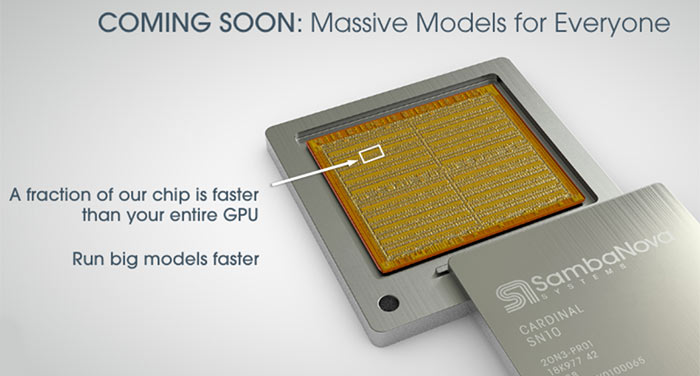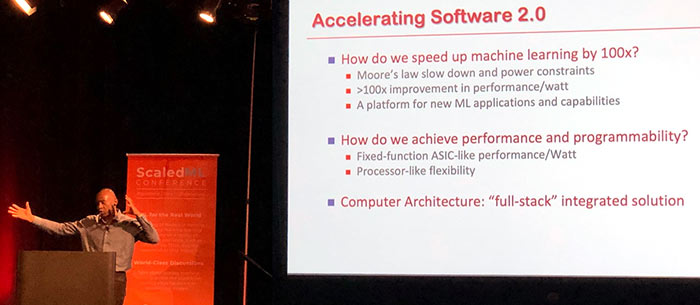Startup SambaNova Systems has dramatically come out of stealth mode as a new round of funding (US$250m) has been secured. While the firm's current solutions are aiming at efficient AI and data-intensive processing from the data centre to the edge, the Palo Alto, California-based firm has its sights set on a much more industry changing long term goal - a shift from typical Von Neumann computer and components (currently championed by the likes of AMD, Intel and Nvidia) to a software defined computer using reconfigurable data-flow architecture.

After securing the latest funding (bringing total VC funding to US$450m) Rodrigo Liang, chief executive of SambaNova Systems, took part in an interview with ZDNet. "We are at the cusp of a fairly large shift in the computer industry," asserted Liang. "It's been driven by AI, but at a macro level, over the next twenty to thirty years, the change is going to be bigger than AI and machine learning." For some background, Rodrigo Liang was previously responsible for SPARC processor and ASIC development at Oracle.
Our recent computing history and efforts to progress computing have been focussed upon instructions and operations - and optimising these, said Liang. However, SambaNova is looking at the whole system, across several layers of hardware and software. Using this Gestalt view it is hoped to "really provide a fundamental shift in computing".
Helping Liang in his quest are Stamford professors Kunle Olukotun and Chris Ré. Olukotun is the leader of the Stanford Hydra Chip Multiprocessor (CMP) research project and recently won the IEEE Harry H. Goode Memorial Award. Meanwhile, Ré is a MacArthur genius award recipient and affiliated with the Statistical Machine Learning Group, Pervasive Parallelism Lab, and Stanford AI Lab.
Interestingly, Olukotun provided some insight into how the move from Von Neumann machines to a new computing paradigm might occur. In an interview last spring the professor explained to ZDNet that "rather than stuffing a program's instructions into a fixed set of logic gates permanently etched into the processor, the processor re-arranges its circuits, perhaps every clock cycle, to variably manipulate large amounts of data that 'flows' through the chip."

The massive change away from the CPUs, GPUs, associated architectures, and software we have today will require significant capital. The latest funding round isn't just providing $250m from 'random' investors. The group behind this funding includes names like; Blackrock, Google Ventures, Intel Capital, Walden International, WRVI Capital and Redline Capital. Apparently the latest funding round provides an indicative value for SambaNova in the region of US$2bn.













